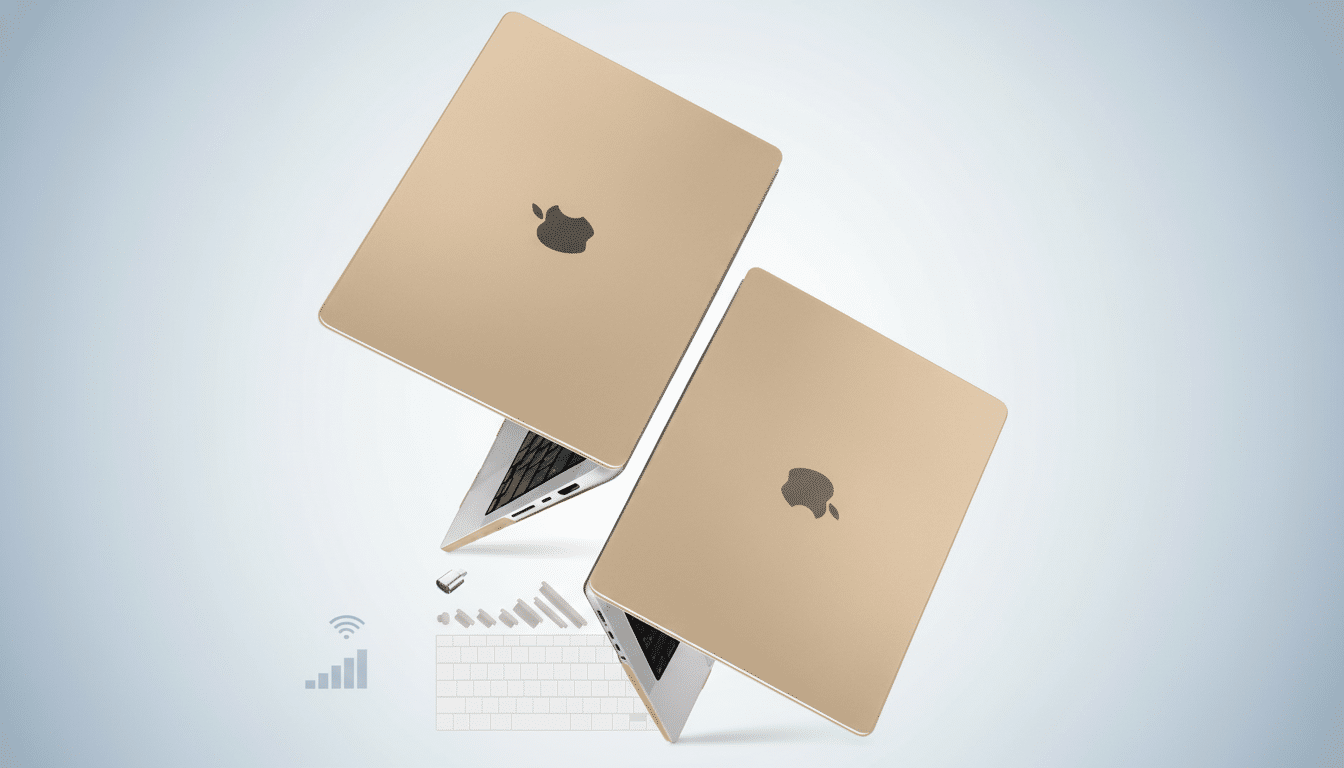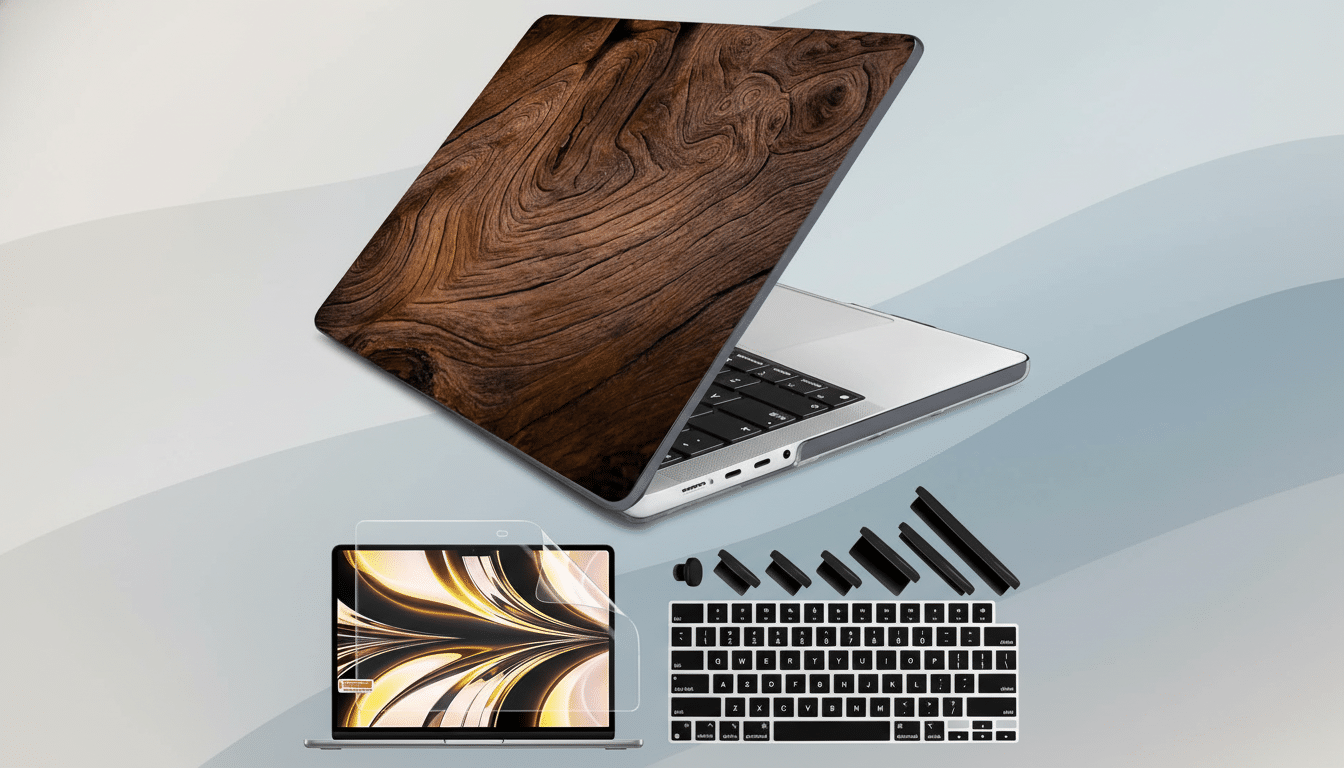Apple’s new 14-inch MacBook Pro maintains the design inertia and swaps in a new engine. Clearly the headline is M5, and Apple’s pitch line is simple: more speed, a lot more AI headroom, with no price hike. If you purchased the M4 last year, the most pressing question is whether those gains make a difference in your operational work.
What actually changes between the M4 and M5 models
Externally, almost nothing. The 14.2‑inch Liquid Retina XDR display is again in place, sharing the same mini‑LED panel, ProMotion refresh rate and, of course, optional nano‑texture glass to cut down reflections. The aluminum chassis, weight and color options remain the same, as does the great keyboard and big Force Touch trackpad. That continuity is good news if you’re already a fan of this design.
- What actually changes between the M4 and M5 models
- CPU and GPU upgrades that separate M5 from M4 MacBook Pro
- AI performance gains and Apple Intelligence on M5 vs M4
- Battery life and thermals compared between M5 and M4
- Ports, display, and design differences in M5 versus M4
- Storage speed, capacity, and pricing on M5 versus M4
- Who should upgrade to M5 and who should stick with M4
- Bottom line: Is the MacBook Pro M5 a worthwhile upgrade?

The meaningful differences are inside. Apple is calling M5 a full generation leap over M4 with a tuned 3nm process, updated graphics architecture and wider on‑device AI acceleration.
CPU and GPU upgrades that separate M5 from M4 MacBook Pro
The base M5 retains a 10‑core structure (of four performance cores and six efficiency cores), however, the cores are reconfigured to provide more sustained performance per watt. That tends to mean speedier code compiles, faster photo exports and more responsive app builds — all without sacrificing battery. Don’t anticipate a big leap here from M4: imagine incremental CPU gains instead, which is what tends to happen in mid‑cycle Apple Silicon refreshes.
The bigger move is on the graphics front. According to Apple, the new 10‑core GPU has up to 45 percent faster graphics performance and around 30 percent faster gaming speeds compared with M4 in supported games. The architecture introduces second‑generation hardware ray tracing and, notably, a neural accelerator incorporated into each GPU core. The latter change enables macOS to rely on both the Neural Engine and GPU for AI tasks, dynamically sharing the load for greater sustained throughput.
AI performance gains and Apple Intelligence on M5 vs M4
Apple says it provides up to 4x faster performance for on‑device machine learning than Core ML on M4. Practically, that means bigger local models, shorter response times and fewer journeys to the cloud. macOS Tahoe builds on the Apple Intelligence suite (read: smarter summarization, image generation and Live Translation in system apps), giving developers more hooks through foundation models and Core ML pipelines.
Where you’ll feel it: transcription in Final Cut Pro, bulk background object removal in photo workflows and local model prototyping for machine learning. Creative apps from companies such as Adobe and Blackmagic already take advantage of Apple Silicon acceleration – and with M5’s combined GPU and Neural Engine pathways, batch operations will complete more quickly so that the machine remains available for use.
Battery life and thermals compared between M5 and M4
Apple quotes the M5 MacBook Pro at an identical 24 hours of mixed-use battery life as it does the M4 model. The company also cites efficiency improvements when under heavy loads, courtesy of the process and scheduler tweaks. Realistically, light workdays won’t feel different, but long renders and Xcode builds will hold higher clocks longer before fans ramp—useful in quiet rooms and on set.
Ports, display, and design differences in M5 versus M4
MagSafe 3, HDMI, an SDXC card slot and a 3.5mm jack are also back; there are now three USB‑C ports, all of which remain Thunderbolt 4 on the entry‑level configuration. Support for Thunderbolt 5 remains limited to higher‑tier chips, though, according to Apple’s spec list. If you’re driving a bunch of high‑resolution external displays or very fast external storage arrays, that distinction still matters; but for most creators, the existing I/O checks all the necessary boxes.

The display remains a strength. The mini‑LED XDR panel is capable of delivering near‑OLED black levels and high HDR brightness, as well as accurate color profiles. If reflections are an issue where you work, the nano‑texture is still a worthy modification.
Storage speed, capacity, and pricing on M5 versus M4
Two more utilitarian moves are that Apple claims internal storage is up to twice as fast now and the maximum capacity doubles from 2TB to 4TB. Faster SSDs mean faster load times, faster scratch‑disk duties in video and 3D apps, and speedier local model loading for AI. As ever, there are trade-offs: You can’t add storage with Apple’s unified architecture and the premium to step up gets steep quickly.
Starting price remains at $1,599 for the 14‑inch model, just like the M4 generation. That pricing stability, combined with a larger performance leap in AI and graphics, is what Apple’s value argument centers on this cycle.
Who should upgrade to M5 and who should stick with M4
Upgrade from M4 if your work is leaning heavily on GPU and AI acceleration — this could be motion graphics involving ray tracing, video pipelines using AI denoising or masking, or local LLM workflows. You’ll be saving time on every batch job and enjoying silkier multitasking while exporting heaps of images.
Stay with M4 if your workload is CPU‑bound and already speedy—writing, research, light photo edits, and everyday office work. The day‑to‑day feel will largely remain the same, and battery life is about the same, too.
From M1 and M2, the M5 is a big leap: Faster single‑thread performance, much stronger GPU performance, vastly improved AI engine performance, more responsive high‑end apps. For all those people, it’s the sweet spot to extend the useful life of a laptop by a few years.
Bottom line: Is the MacBook Pro M5 a worthwhile upgrade?
The M5 MacBook Pro does not so much reinvent the hardware that you pick up; it reinvents what the same shell is able to do. For content creators and app developers who can take advantage of all those strengths, it’s a strong upgrade with significantly faster graphics performance, a serious shot of AI acceleration, speedier storage and solid pricing. If you bought an M4 and your workflow is light, just sit tight. If time is money in your workflow, however, it’s the M5 that’s the savvier play.

